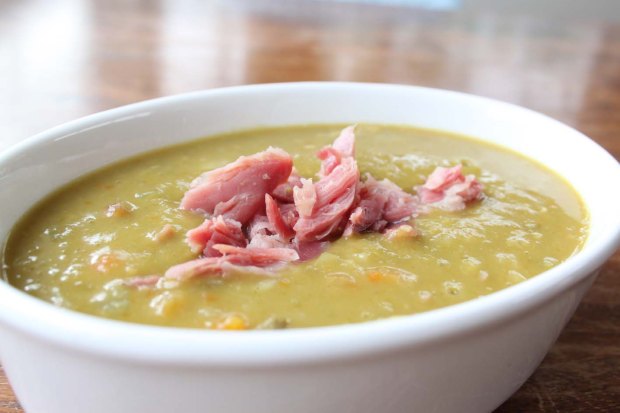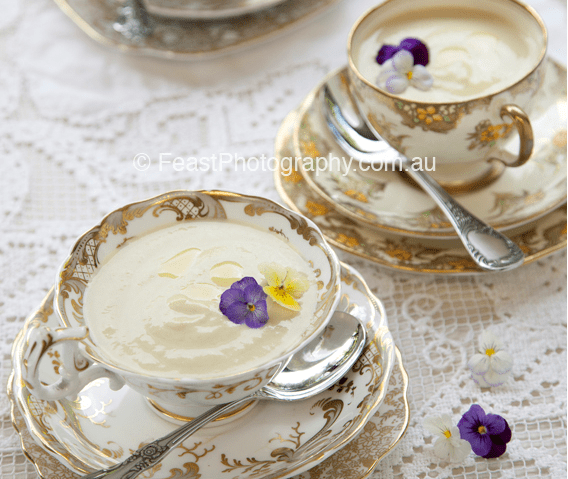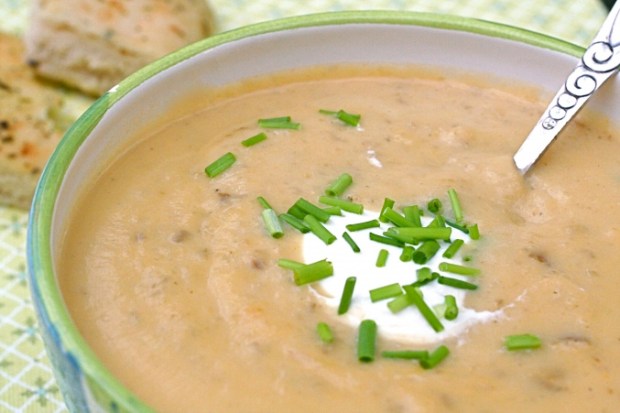This is Grandma’s recipe.
Ham bones, or a combination of ham and bacon bones
2 onions, quartered
A few sticks of celery
3 or 4 large fresh carrots, grated
Several packets of split peas, green or yellow, or a combination of both (the colour of the peas doesn’t affect the flavour of the soup, only its colour)
1 teaspoon prepared hot English mustard
Additional ham, finely chopped
Remove any good ham that may be left on the bones, and set aside. Place bones in a large saucepan or stockpot with the onions and the celery. Cover with water, and bring to the boil. Skim off any scum that may form on the surface. Reduce heat and simmer gently for 4 – 5 hours, skimming when necessary. When you are happy with the colour and depth of the stock, strain it into a clean container and refrigerate so that fat can be easily removed.
Soak peas in cold water overnight, removing any black ones that will float to the surface when the peas are stirred.
Return the stock (with fat removed) to a heavy based casserole which has been greased on the bottom to stop the peas sticking during cooking. Add the strained peas, grated carrots and hot English mustard. Bring to the boil, then reduce heat and allow to simmer slowly until the peas have lost their definition and soup has become thick. Take care that it does not burn on the bottom as the burnt bits will affect both the taste and the appearance of the soup. Lastly, add the chopped ham and stir in well. The soup should be thick, so don’t stint on the peas.
Season to taste with salt and freshly ground pepper.





